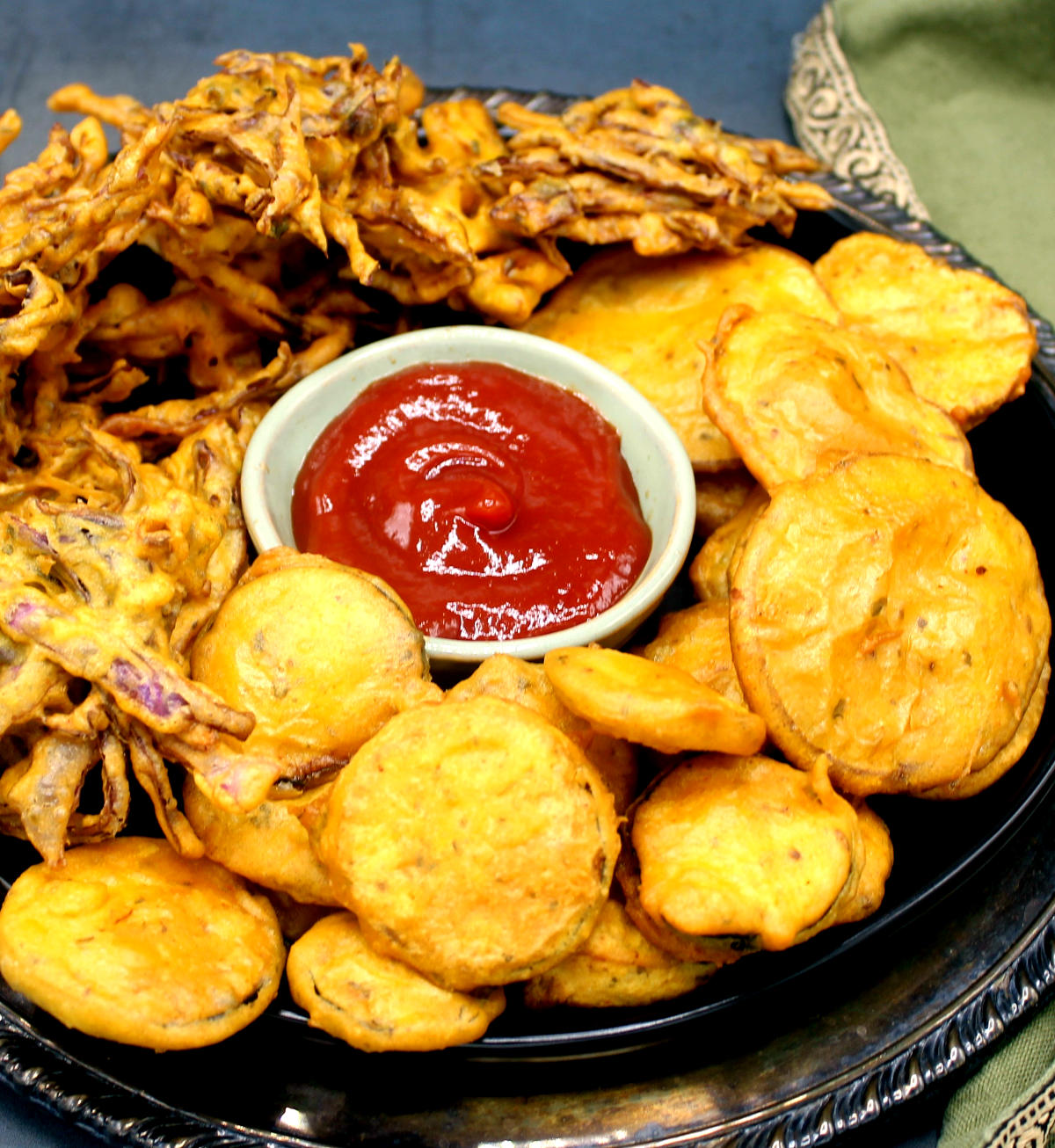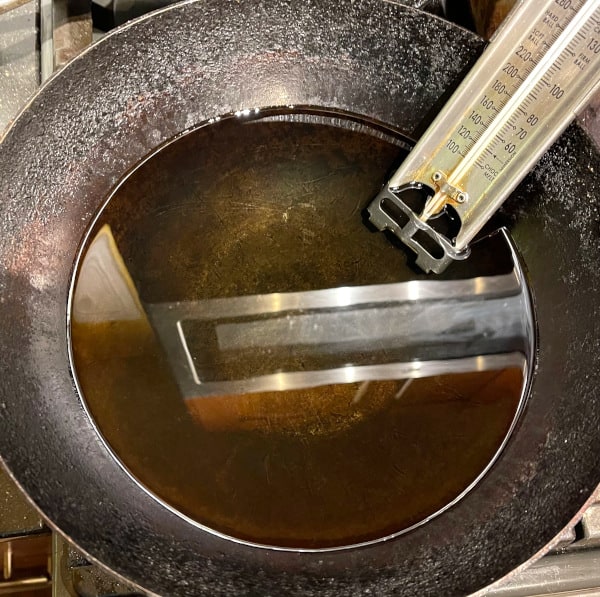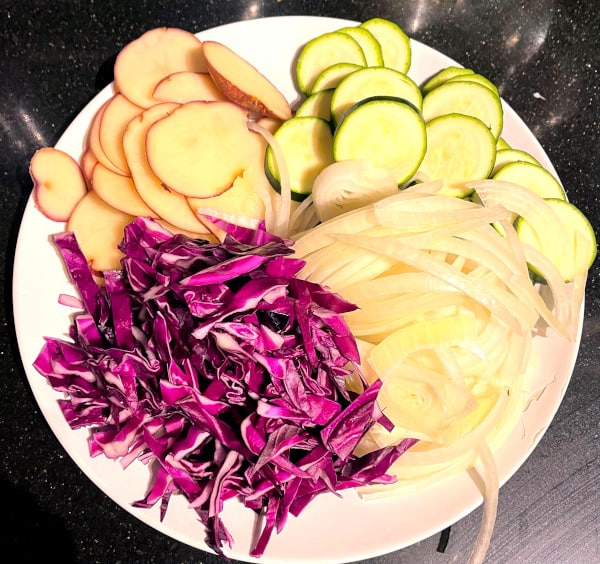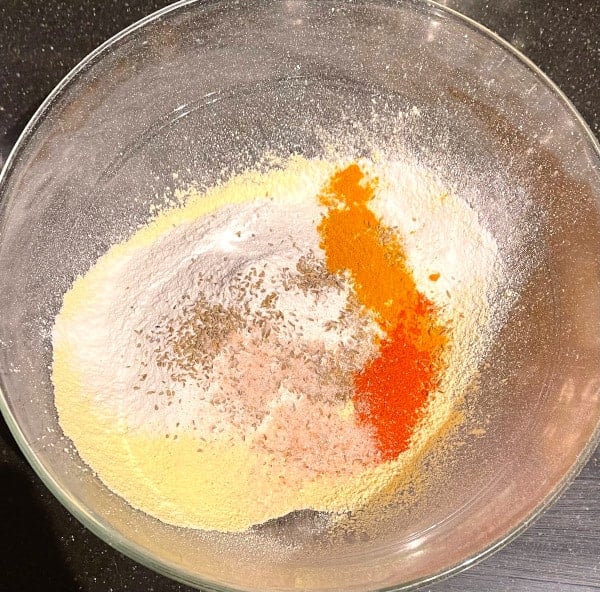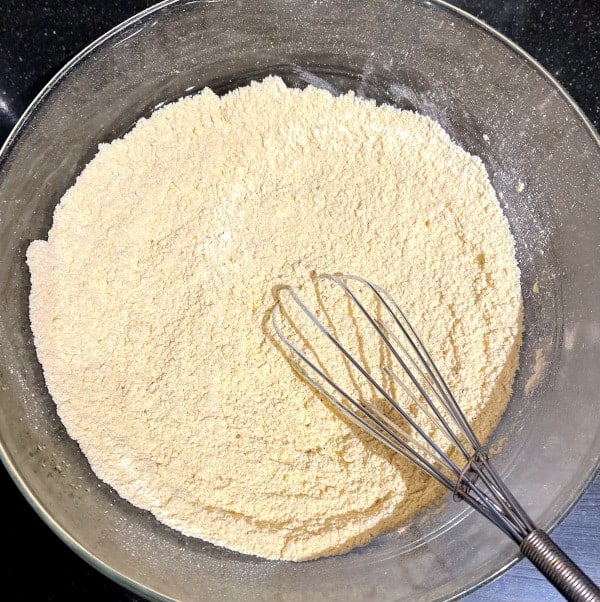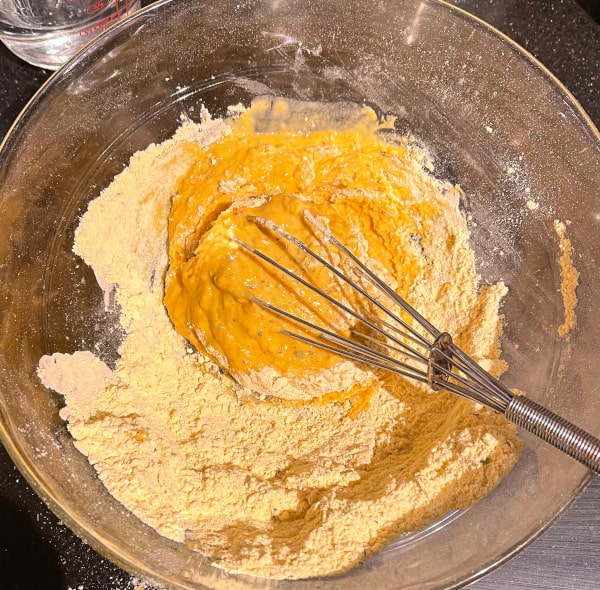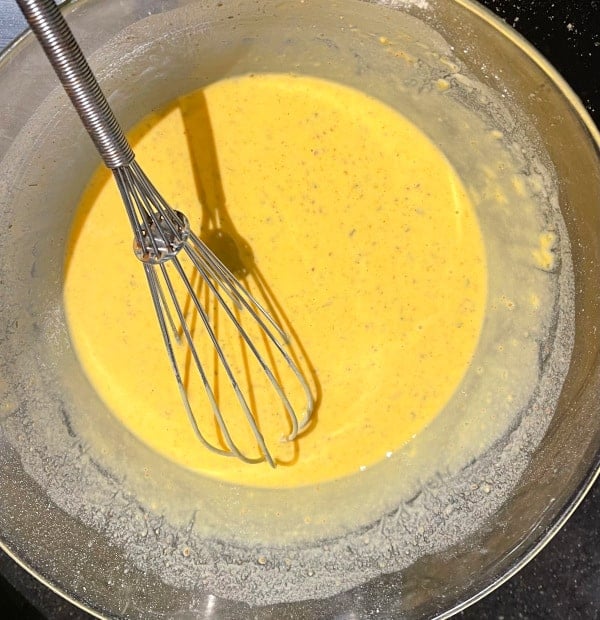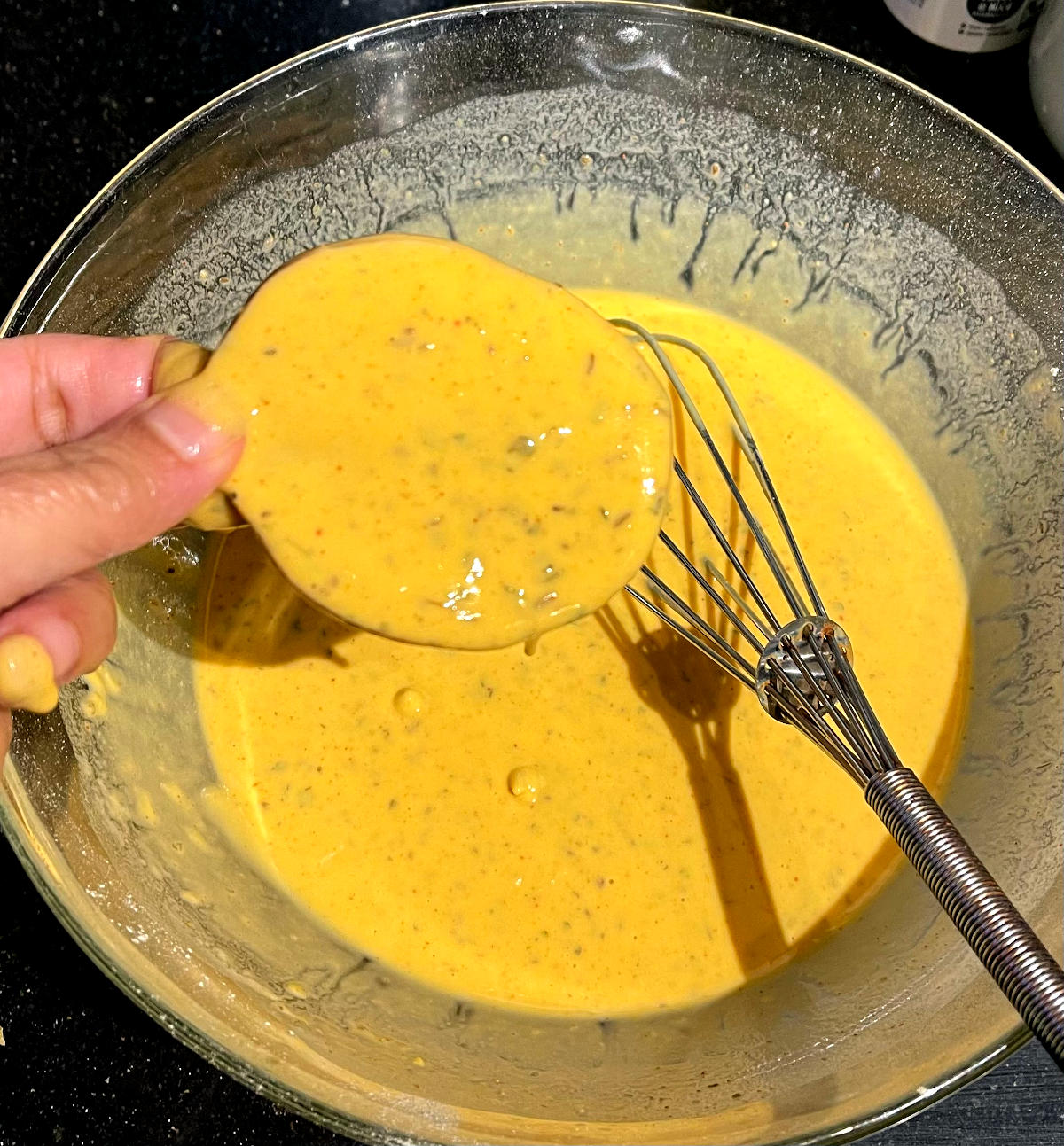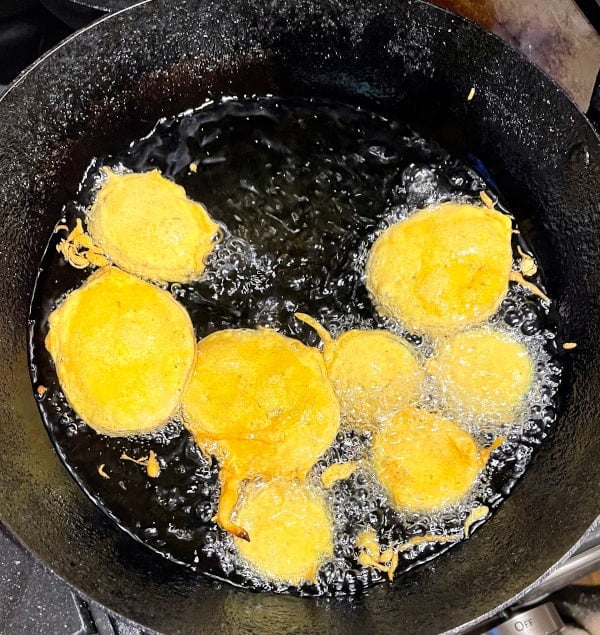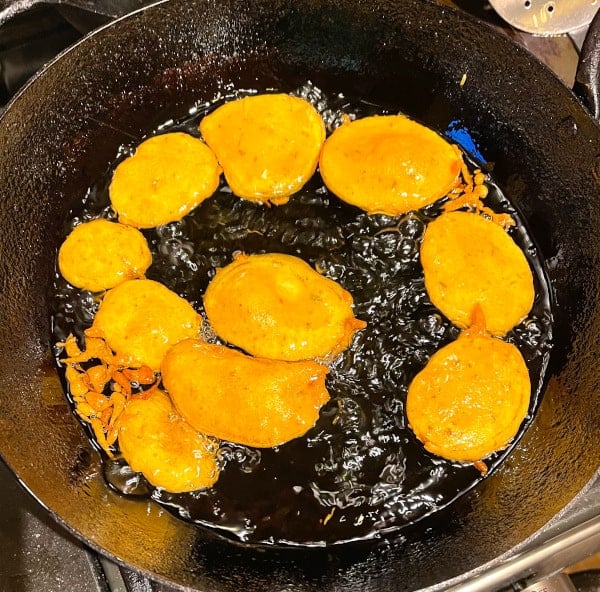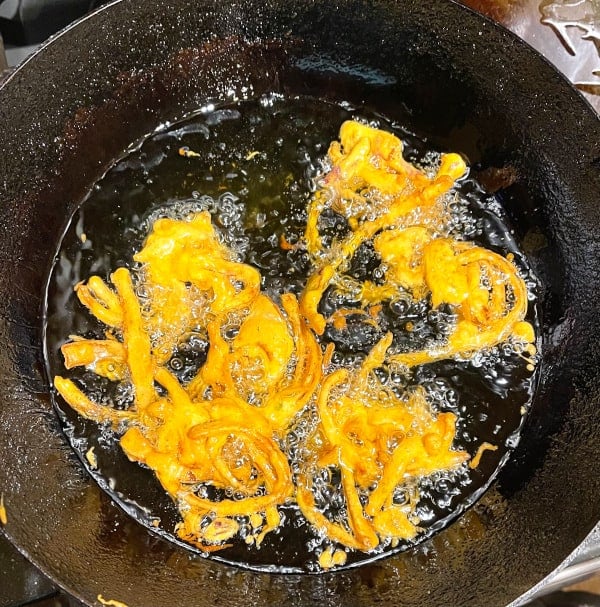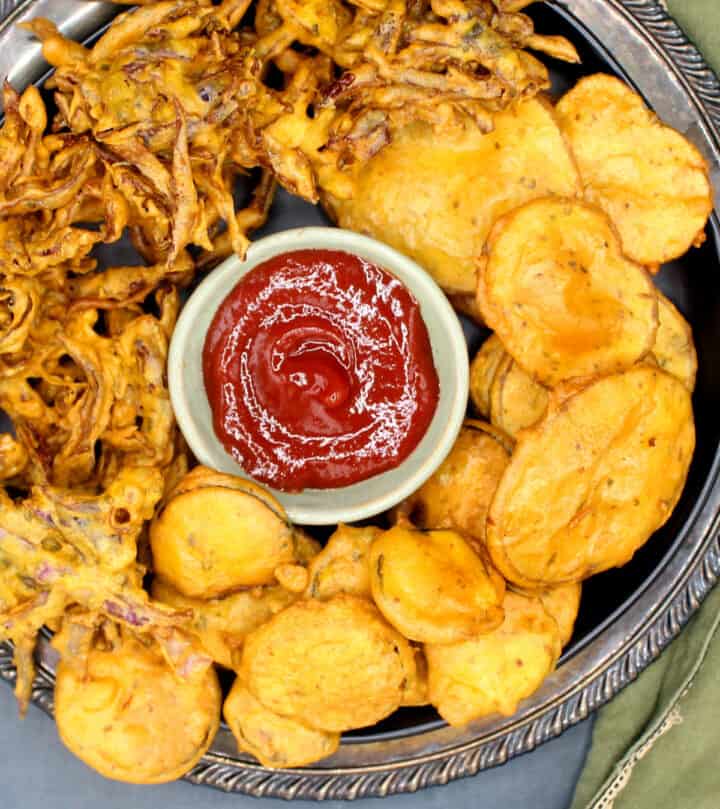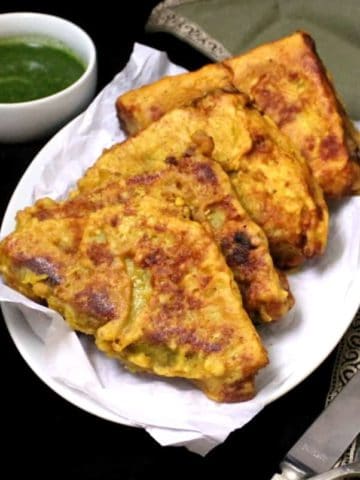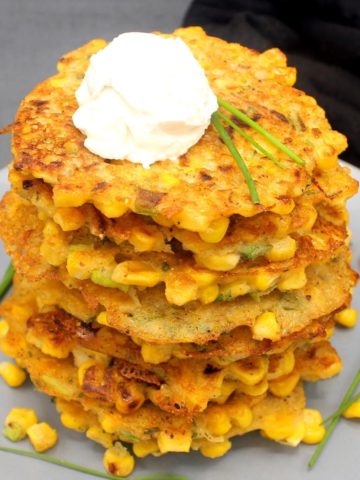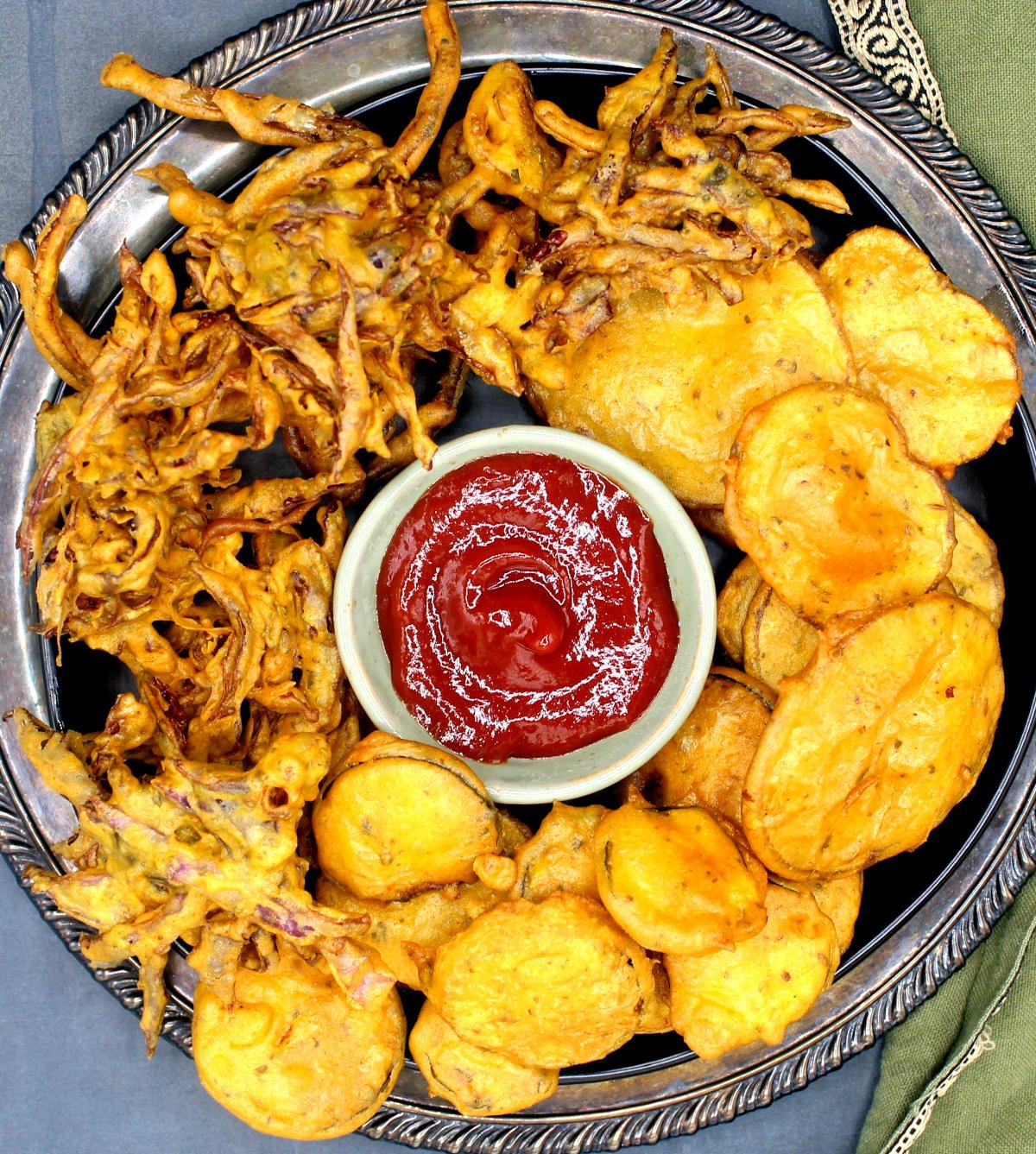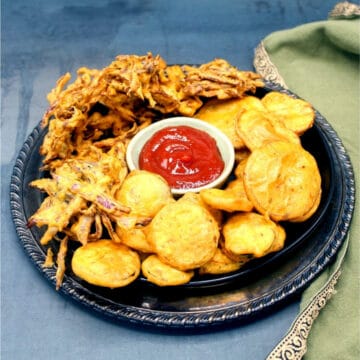What’s a pakora?
Pakoras, also called pakoda, bhaji or bhajia across India, are fritters made usually by dunking chopped or sliced veggies in a simple, chickpea-flour batter. The fritters are then deep-fried until they are golden with crispy, brown edges. Vegetable pakoras are the most common, but you can frequently find pakoras made with meat and paneer, an Indian cottage cheese. The pakoras we ate growing up were always made at home, although you can find pakoras served as a street food in India. This vegetable pakora recipe makes a lot of pakoras so it’s perfect if you are expecting a crowd. Or save leftovers (if you have any, I never do) and reheat for a much-anticipated snack for another time!
A crispy, crunchy, healthy-ish snack
These pakoras are perfectly spiced and crispy. The veggies hiding underneath that golden coat melt in your mouth. While a deep-fried food can’t exactly be called healthy, all the ingredients that go into a pakora are really good for you. Follow my tips below to ensure the pakoras absorb very little oil. This is a versatile recipe. Once you’ve mastered the batter, you can make pakoras with nearly any veggie, and even with leafies (like these Swiss chard fritters). It’s a great way to get tough-to-love veggies like eggplant and okra into those little bellies. I also shared with you, years ago, a recipe for zucchini blossom pakoras, which are a rare summer treat. It is easy to make pakoras. Just make sure you get the batter to the right thickness and do not over-fry the pakoras (see more on this in the tips below). A family-friendly recipe that everyone is guaranteed to love. The veg pakoras are also nut-free, soy-free, gluten-free and vegan.
How to make vegetable pakora
Heat oil. A wok is preferable, but if you don’t have it a cast iron skillet or frying pan will work just as well. Or, if you have a deep fryer, use that. Chop the vegetables. Slice veggies like potatoes and zucchini thinly, using a knife or a mandolin. You want them to cook quickly in the oil. Chop the onions and cabbage into long, thin strands. You can make them as long or short as you like, I like mine gracefully long because I love how they look once they are fried.
Whisk batter ingredients together: Place all the ingredients except the vegetables in a bowl. If the chickpea flour seems lumpy, sift it into the bowl. Whisk all the ingredients to mix.
Add the water: Slowly begin to trickle in the water, a quarter cup at a time. Whisk, and then add more. Doing this will ensure you end up with a smooth, not lumpy, batter. It’s very hard to get the lumps out of the batter once you’ve added all the water, so doing this slowly is really important.
Check the consistency of the batter. Dip a veggie in the batter–I used a potato as you can see in the picture below. The excess batter should easily drip off while leaving a nice, even coating over the potato. You don’t want a very thick batter because you should be able to taste the veggie and not just the coating, but you don’t want a batter so thin that it just slides off the vegetable. To make pakoras with leafy veggies, or with veggies that have a slick surface like okra and asparagus, make the batter thicker.
Fry the pakoras. To fry the pakoras, dip the sliced potatoes and zucchini into the batter, one at a time, and carefully place in the hot oil in the wok. Fry until one side turns lightly golden, then flip over and cook the other side. Flip over once or twice more. You want a lovely, golden color on the pakora but you don’t want them to brown. The pakoras will continue to take on a little more color after you’ve taken them out of the oil. To make cabbage or onion pakoras (I do this after I’ve finished making the potato and zucchini pakoras), place all of the chopped veggies into the remaining batter and mix. Scoop out chunks of the batter with the veggies and add them to the frying pan.
Drain out any excess oil. When fried at the right temperature your pakoras will be perfectly crispy and not greasy, because they won’t absorb much oil. Place the fried pakoras in a colander or plate lined with paper towels to absorb any excess fat clinging to them. Serve hot. Pakoras are best served hot, but wait about 5-10 minutes before serving as the juices from the veggies can be hot and might surprise the eater when they bite into the pakora. If you need to reheat them, do so in an oven preheated to 350 degrees Fahrenheit for five minutes. Don’t let them brown. These pakoras remain crunchy hours after cooking, so you can just eat them at room temperature.
Storage instructions
Store leftover pakoras in the refrigerator for up to three days. Place in an airtight box lined with a paper towel as soon as they cool down and refrigerate. Reheat for 5-7 minutes in a preheated oven before serving.
Cauliflower, cut into small florets. Broccoli would work too. Eggplant. Try and use slimmer eggplants, like Indian, Chinese or Japanese eggplants, and slice them thin. Bell peppers. Bell peppers make amazing pakoras. Use bell peppers of any color. Okra. Cut the okra into 1-inch pieces and keep the batter a bit thick so it clings to the okra. Carrots. Carrots are a great veggie to use in pakora. Cut into thin slices. Any leafy vegetable. Spinach is great in pakoras, as is kale or almost any leafy green. If using a leafy, keep the batter a bit thicker, because you’ll need to mix the veggies into the batter and then add clumps of it to the wok or fryer. Zucchini blossoms Asparagus. I’ve shared with you a recipe for a baked asparagus pakora before. If you decide to deep-fry, make sure you chop the asparagus into smaller pieces and, again, keep the batter thick so it doesn’t just slide off the slick asparagus stems. Corn. I’ve shared with you a no-oil corn pakora recipe and you can use a similar batter to make fried pakoras. Tofu. Tofu makes awesome pakoras, which taste similar to paneer pakora. Cube extra firm or superfirm tofu, dip it in the batter, and fry.
Check to get new recipe updates by email.
More tasty fritter recipes
Recipe card
